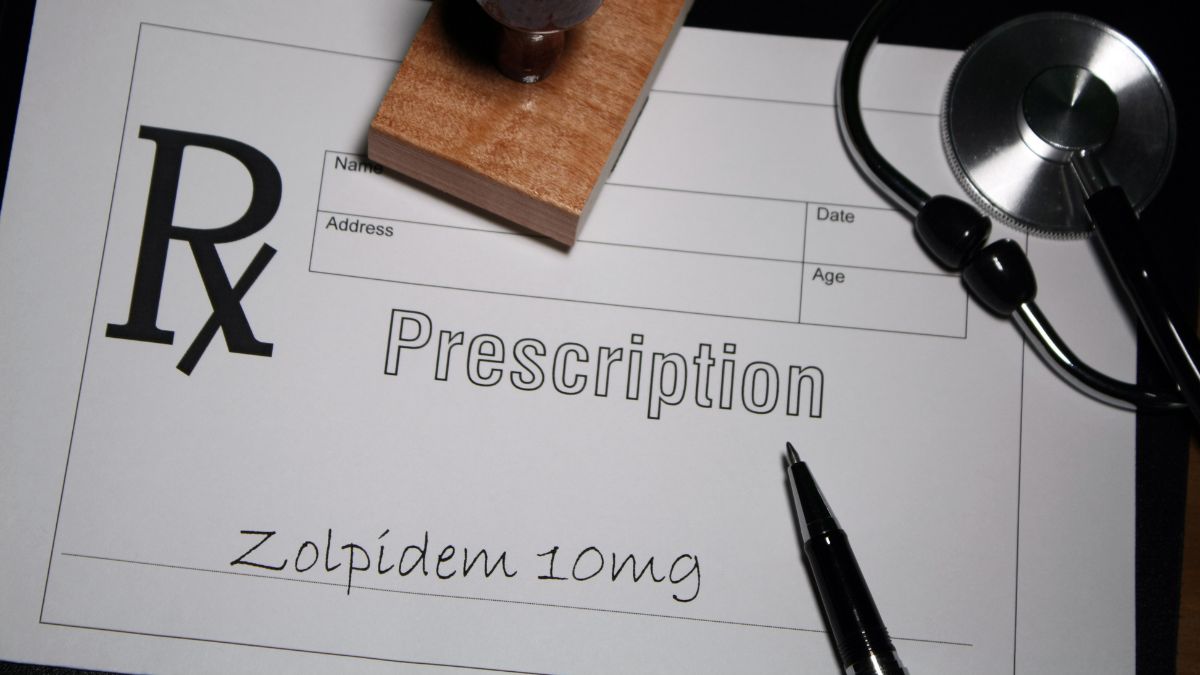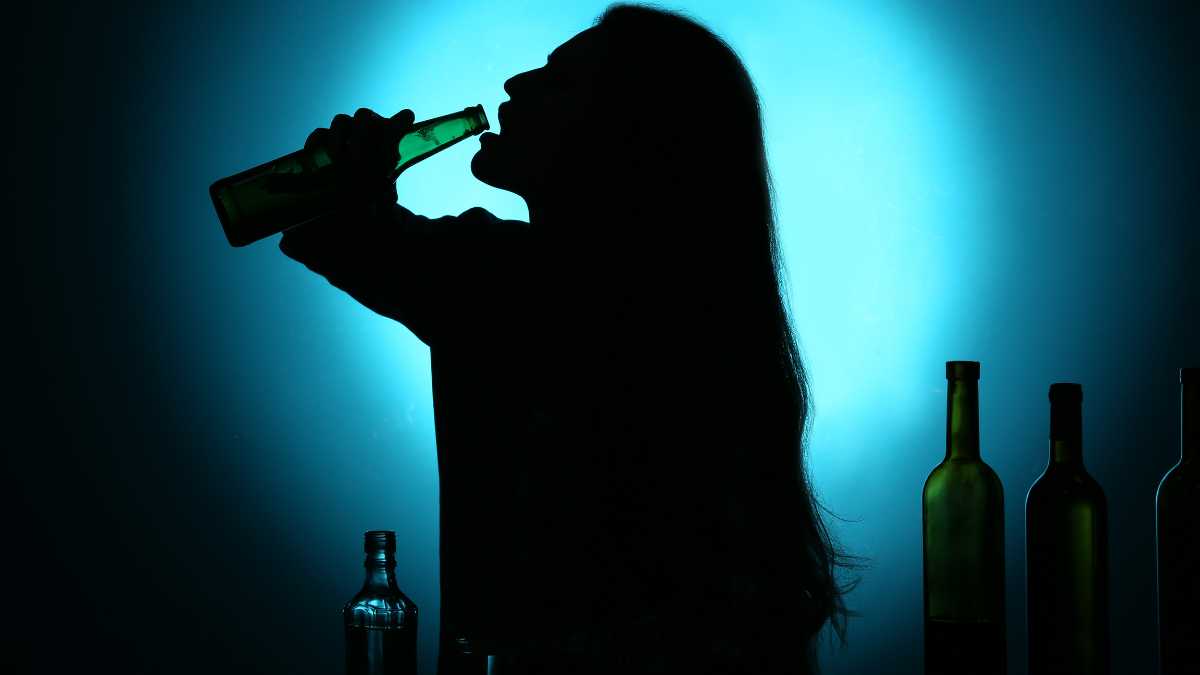Xanax and alcohol are both legal drugs. While Xanax is intended only for medical use, it is often abused for recreational purposes. On their own, Xanax abuse and alcohol abuse are already highly dangerous.
If people abuse alcohol and Xanax simultaneously, they expose themselves to an increased risk of overdose and other potentially life-threatening consequences. Let's dive deeper into the risks of combining Xanax with Alcohol.
What is Xanax?
Alprazolam (Xanax) is a medication used to treat anxiety and panic disorders. It is a member of the benzodiazepine drug class, which decreases activity in the central nervous system. It enhances the effects of gamma-aminobutyric acid (GABA), a natural chemical in the body with calming properties.

Alprazolam is the most frequently prescribed psychotropic drug in the U.S. It has also been abused because of its euphoric, anxiolytic, and disinhibiting qualities. According to the Substance Abuse and Mental Health Services Administration (SAMHSA), there were 123,744 visits to emergency departments involving the nonmedical use of Xanax in 2011. The same report also revealed benzodiazepines were implicated in 29.3 percent of drug-related suicide attempts. Alprazolam (Xanax) accounted for 11.1% of the total.
Side Effects of Xanax
Like alcohol, Xanax is a central nervous system depressant. This indicates that it inhibits nervous system activity. When ingested orally, Xanax is quickly absorbed. Effects can be felt within 30 minutes and can last up to approximately 6 hours. The most common side effects of Xanax are difficulty speaking, impaired coordination, low blood pressure, and increased libido.
Additional side effects of Xanax include:
- Muscle weakness, poor balance/coordination
- Decreased mental alertness, confusion, trouble concentrating, memory impairment
- Drowsiness, fatigue
- Light-headedness, dizziness
- Blurred vision
- Slurred speech
- Upset stomach, nausea, vomiting
- Worsening depression
Mixing Xanax and alcohol can have negative interactions that worsen the effects of each substance.

Physical Side Effects of Mixing Alcohol and Xanax
- Poor coordination and delayed motor skills
- Decreased heart rate
- Slowed breathing
- Dizziness
- Sleepiness
- Blurred vision
- Slurred speech
- Excessive sedation
- Coma
- Overdose on Xanax and alcohol
- Death
Behavioral Side Effects of Mixing Alcohol and Xanax
- Anxiety
- Memory impairment
- Hostility
- Agitation
- Aggression
- Uncharacteristic behavior
Call Design for Recovery to Begin Your Healing Journey!
Reach out to our team to discuss sober living options and next steps toward a healthier routine.
Risks of Long-Term Xanax Abuse
Long-term abuse of Xanax increases the chance of developing considerable physical dependence. Similarly, Xanax use can lead to tolerance, which means high doses are required to have the same effect. When a CNS depressant like alprazolam is suddenly stopped, many abusers run the danger of going through withdrawal symptoms, which can start as soon as a few hours after the last dose.
Withdrawal symptoms of Xanax include:
- Headaches
- Sweating
- Hyperventilation
- Racing pulse
- Muscle spasms, tremors
- Seizures
- Insomnia
- Hallucinations, delirium
- Restlessness, difficulty concentrating, feelings of unreality
- Depression, anxiety, panic attacks
Withdrawal symptoms of Xanax can be unpleasant. In rare cases, when a heavy Xanax user attempts to quit cold turkey, it can cause life-threatening issues, such as seizures.
The Danger of Mixing Xanax and Alcohol
According to a 2018 study on animals, ethanol, the principal component of alcohol, increases the peak blood concentration of alprazolam. As a result, the “high” or “buzz” and the adverse effects can be heightened. The liver must also exert greater effort to metabolize alcohol and Xanax since the same liver enzymes break down the two substances.
Moreover, a potentially fatal overdose can occur when Xanax and alcohol are combined. If someone has consumed alcohol and Xanax and is displaying any of these overdose symptoms call 911 right away: impaired coordination, slow or depressed breathing, sleepiness, impaired reflexes, extreme confusion, loss of consciousness, and coma.

Taking large amounts of Xanax or alcohol can be lethal. These substances have a higher tendency to result in death when combined. According to the CDC, emergency room visits for benzodiazepine overdoses rose by 24% from 2019 to 2020. Meanwhile, overdose deaths brought on by alcohol grew by 25% within the same time frame.
Why Do People Mix Alcohol And Xanax?

People take Xanax while drinking alcohol in an attempt to get a more calming effect, as both Xanax and alcohol are central nervous system depressants. Doing so slows down the GABA in the central nervous system. GABA is a neurotransmitter that inhibits brain activity, resulting in a calm and relaxed state.
Since GABA also helps people to sleep and feel calm, they combine Xanax and alcohol to enhance these beneficial effects. However, the combination of the two substances is inherently dangerous.
Xanax also limits the inhibitory neurons in the ventral tegmental region of the brain, which is responsible for restricting the release of dopamine. When Xanax limits these neurons, dopamine levels rise, resulting in pleasure and encouraging pleasure-seeking behavior. Because of this, the habit of misusing Xanax develops.
Signs and Symptoms of Xanax and Alcohol Abuse
Xanax and alcohol both have negative effects. Even abusing one of these substances can damage one’s health, so it is no surprise that when these drugs are combined, the dangers are increased, and the depressive effects are intensified. These medications can have serious consequences for two of your body’s major organs: the heart (causing high blood pressure, cardiac arrest, cardiomegaly, and irregular heartbeat) and the liver (causing cancer, cirrhosis, and fatty liver). Signs and symptoms of concurrent Xanax and alcohol use include:
- Drowsiness
- Slow pulse
- Slow breathing
- Slurred speech
- Impaired coordination
- Irritability
- Memory problems
- Dizziness
- Unsteady gait
- Constipation
- Nausea
- Stupor
- Coma
- Weight loss and other indicators of personal neglect
- Changes in sex drive
- Problems urinating
People More at Risk When Combining Alcohol and Xanax
Since everyone’s body processes alcohol differently, drinking alcohol carries dangers that are specific to each individual. Yet, two groups of people are more likely to experience problems when taking alcohol and benzodiazepines like Xanax.
Older adults
As we age, our liver and kidneys gradually lose their ability to eliminate substances from our system. We also become more sensitive to substances and medications that affect our brains and feel their effects more strongly.

Older adults, or those over the age of 65, are more sensitive to the effects of alcohol than younger people. Similarly, benzodiazepines have a longer duration of action in older individuals because the medication leaves the body more slowly. This is why older persons are advised to take lesser doses of prescribed benzodiazepines.
In older persons, the risk of side effects from alcohol or Xanax alone is already considerable. However, when alcohol is combined with Xanax, the likelihood of harmful effects and their consequences, such as falls, vehicular accidents, and other accidental injuries, increases.
Contact Design for Recovery Today!
Fill out our quick form to connect with a peer mentor and learn how our sober living community supports accountability, structure, and personal growth in recovery.
Women

Women are also more likely to have health consequences when they mix Xanax with alcohol. This is because women often have less body water than men, resulting in higher blood alcohol concentrations. This means that they will feel the effects of alcohol more quickly and intensely. Women who consume alcohol while taking Xanax are more likely to encounter serious adverse effects.
Lethal Dose of Xanax and Alcohol
The daily recommended and therapeutic dosage range of Xanax is between 0.25 mg and 0.5 mg. This amount may be administered in three divided doses throughout the day. Your doctor may raise your dosage gradually until your symptoms are under control. The daily dosage may be as high as 10 mg in certain instances. Meanwhile, a fatal dose of Xanax relies on various factors, including the following
- Age
- Weight
- How your body metabolizes Xanax
- Co-occurring health conditions, such as kidney damage or liver damage
- Other substances present in the system
Xanax overdose is possible with any dose that exceeds the prescribed dosage. A study revealed that alprazolam is considerably more toxic than other benzodiazepines in an overdose.

A lot of factors impact the amount of alcohol that each individual can tolerate. That said, the effects of alcohol vary slightly from person to person. Age, weight, and sex are significant influences in alcohol overdose. Typically, when a person’s blood alcohol concentration (BAC) exceeds 0.40 percent, they are in a high-risk situation. At this level, coma or death is possible. When your blood alcohol concentration (BAC) exceeds 0.40 percent, you’re probably severely intoxicated and showing signs of drowsiness, nausea, and confusion. Take into account that 0.08 percent is the legal limit for intoxication in most areas. Because these substances slow the central nervous system, combining alcohol and Xanax intensifies the risk of severe symptoms, resulting in a fatal overdose or cardiac arrest.
Interaction Between Alcohol with Other Benzodiazepines
There are various risks linked with combining drugs and alcohol. Every benzodiazepine warning label expressly warns against this, and physicians frequently encourage patients to avoid alcohol while on benzodiazepines. The dangers associated with combining these substances are much greater than the risks associated with misusing them individually. Other benzodiazepines, such as clonazepam, diazepam, and lorazepam, also have an increased risk of dependence and can produce similar adverse reactions as Xanax when combined with alcohol. Combining Xanax and other benzodiazepines with alcohol may result in severe impairment and serious side effects, including:
- Labored breathing
- Disinhibited behavior
- Severe confusion and paranoia
- Depression symptoms
- Suicidal thoughts or behavior
Always consult with a medical professional before taking any drug. This includes prescription medications, drugs available without a prescription, vitamins, nutritional supplements, and other drugs. This will help your doctor pick the best medication and dosage to minimize the possibility of drug interactions.
Withdrawal Symptoms of Alcohol and Xanax
When you quit consuming alcohol and Xanax, you will likely experience withdrawal symptoms. Even those who have taken Xanax as prescribed for a prolonged period must wean themselves off the medicine gradually. When your nervous system adjusts to the absence of these medications, you may suffer severe withdrawal symptoms, including:
- Erratic breathing
- High blood pressure, fast or fluttering heartbeat
- Nausea, vomiting
- Headache, hallucinations
- Delirium tremens, seizures, confusion
- Restlessness, tingling in extremities
- Fever, chills, and sweating
- Loss of consciousness
- Coma
Alcohol and Xanax Addiction Treatment
Medical detox is typically the initial step in Xanax or alcohol addiction. Once you have eliminated these substances from your system, you must address the underlying causes of your addiction to avoid recurrent substance abuse. In addition, you must understand alcohol and drug dependence and acquire skills and practices to avoid relapse. A professional addiction treatment program might be beneficial.
Addiction treatment centers include both inpatient and outpatient rehabilitation options. The severity of your addiction, your clinical needs, co-occurring mental illness, and your support system determine your level of treatment. In addiction treatment, you will examine the reasons behind your drug or alcohol dependence. You will also begin addressing and recovering from these issues through the use of methods such as individual or group therapy, family therapy, or 12-step groups involving drug or alcohol rehab.

See your physician to learn more about your treatment options and for a referral to a treatment center. Only a medical professional can determine the safest and most effective approach for your case.
Recovery is Possible at Design for Recovery
Addiction or Disorder is a serious condition that requires outside help. Some people spend years trying to manage their addictions on their own under the mistaken belief that they simply need to exert more willpower and self-control. Others suffer quietly because they are ashamed of their addictions. Many people are reluctant to reach out for help because they believe these drugs are safe.
While alcohol and Xanax are both legal substances, they are still highly addictive and extremely dangerous. The dangers of both drugs are magnified when they are used together, putting people at significant risk of a life-threatening overdose. While some individuals battling addiction manage to quit alcohol and Xanax for short periods, they are likely to relapse and return to the vicious cycle. Unless they address the underlying issues behind their addictions and develop a new set of coping tools.

The sooner you reach out for help, the better. Not only are both addictions progressive disorders tend to get worse over time, but concurrent abuse of Xanax and alcohol are also likely to lead to serious conditions, from automobile accidents to damaged relationships, unemployment, and death. Even people in the early stages of substance use disorder have likely begun to experience some of these consequences, in addition to isolation and loss of freedom.
Design for Recovery is a sober living home for young men that helps people get sober and rebuild their lives. At Design for Recovery, we offer a safe and supportive environment where young men can escape isolation. Our dedicated staff works to help them develop the skills and coping tools they need to get sober and stay sober. Moreover, we understand that tackling drug or alcohol addiction involves more than just saying no to drugs. Most people use substances like alcohol and Xanax because of unresolved or painful issues or mental health problems.

Residents at Design for Recovery learn new values and take steps forward daily toward new life goals. By the time they graduate, residents have already begun to repair relationships, build new ones, work new jobs, and get their legal and financial lives in working order. At Design for Recovery, we believe addiction is optional, and you don’t have to recover alone. Reach out today.
- What is Xanax?
- Side Effects of Xanax
- Physical Side Effects of Mixing Alcohol and Xanax
- Behavioral Side Effects of Mixing Alcohol and Xanax
- Risks of Long-Term Xanax Abuse
- The Danger of Mixing Xanax and Alcohol
- Signs and Symptoms of Xanax and Alcohol Abuse
- People More at Risk When Combining Alcohol and Xanax
- Older adults
- Women
- Lethal Dose of Xanax and Alcohol
- Interaction Between Alcohol with Other Benzodiazepines
- Withdrawal Symptoms of Alcohol and Xanax
- Alcohol and Xanax Addiction Treatment
- Recovery is Possible at Design for Recovery
Begin Lasting Sobriety Now!
Frequently Asked Questions
No. Alcohol and benzodiazepines are a dangerous combination. Using alcohol while taking benzodiazepines can exacerbate the adverse effects of both substances, resulting in severe consequences, including coma and death.
No. Alcohol should be avoided completely. Due to the enhanced negative effects of the interaction, healthcare professionals do not advise consuming alcohol while taking benzodiazepines. Avoiding alcohol entirely while taking these drugs reduces the chance of serious side effects.
Benzodiazepines such as Xanax can remain in the body for some time after ingestion. Consuming alcohol before the drug has left your body might have the same negative effects as intentionally combining them. You may need to wait a week (or even several weeks for long-term intake) before consuming alcohol.
The usual half-life of alcohol is between 4 and 5 hours. It refers to the time required for the body to eliminate 50% of a drug. Thereby, it may take four to five half-lives to eliminate up to 97% of alcohol from the body. It is advised to wait 1 or 2 days after consuming alcohol before taking Xanax.
No. It is not advisable to drink alcohol a few hours after taking Xanax. Xanax has an elimination half-life of about 11 hours, which means a single dosage of Xanax can remain in the bloodstream for up to 134.5 hours (or 5.6 days). Taking alcohol before the drug has left the body completely may have the same adverse effects as knowingly mixing the two substances.
Benzodiazepines are classified into two types based on how long they stay in your system: short-acting and long-acting.
The shorter-acting benzodiazepines alprazolam (Xanax) and lorazepam (Ativan) can remain in the bloodstream for up to five days.
Longer-acting benzodiazepines, like diazepam (Valium) and clonazepam (Klonopin), can linger in your system for much longer. It can take longer than 7 days, or up to 20 days for diazepam in particular, for the body to eliminate these drugs.
Unfortunately, the effects of alcohol on anti-anxiety medication, such as buspirone, are comparable to those of benzodiazepines. This medicine can also induce drowsiness, dizziness, and concentration problems, but to a lesser extent than benzodiazepines. Nevertheless, it is not advisable to consume alcohol while using buspirone.
If symptoms are not identified and treated on time, life-threatening adverse effects might occur. These adverse effects may come from an overdose, withdrawal, or the interaction between Xanax and alcohol.
An overdose of benzodiazepines can be fatal and involves the following symptoms: not responding to sound or touch, confusion, extreme sleepiness or weakness, vision problems, respiratory depression (slow or shallow breathing), and loss of consciousness.
Alcohol withdrawal and Xanax withdrawal symptoms can be more severe, characterized by the following symptoms: delirium tremens (shaking, sweating, and changes to heart rate), seizure, hallucinations, depressed mood, panic attacks, suicidal thoughts or actions, psychosis, problems with speech or movement, and manic episodes (impulsive actions, racing thoughts, or talking rapidly).
If you observe an overdose or withdrawal symptoms, dial 911 immediately and seek medical attention.
George TT, Tripp J. Alprazolam. [Updated 2022 May 1]. In: StatPearls [Internet]. Treasure Island (FL): StatPearls Publishing; 2022 Jan-. Available from: https://www.ncbi.nlm.nih.gov/books/NBK538165/
Substance Abuse and Mental Health Services Administration. (2013). Drug Abuse Warning Network, 2011: national estimates of drug-related emergency department visits. HHS Publication No.(SMA) 13-4760, DAWN Series D-39.
Huang, Z., Xu, Z. Wang, H., Zhao, Z., & Rao, Y. (2018). Influence of ethanol on the metabolism of alprazolam. Expert Opinion on Drug Metabolism & Toxicology, 14:6, 551-559, DOI: 10.1080/17425255.2018.1483338
Centers for Disease Control and Prevention. (2022, March 18). Alcohol Deaths on the Rise and Suicide Declines. https://blogs.cdc.gov/nchs/2022/03/18/6372/
National Institute on Alcohol Abuse and Alcoholism. (1999). Are Women More Vulnerable to Alcohol’s Effects? https://pubs.niaaa.nih.gov/publications/aa46.htm.
Isbister, G. K., O’Regan, L., Sibbritt, D., & Whyte, I. M. (2004). Alprazolam is relatively more toxic than other benzodiazepines in overdose. British journal of clinical pharmacology, 58(1), 88–95. https://doi.org/10.1111/j.1365-2125.2004.02089.x
MedLinePlus.gov. (2022, September 28). Blood Alcohol Level. https://medlineplus.gov/lab-tests/blood-alcohol-level/







Written By
David Beasley